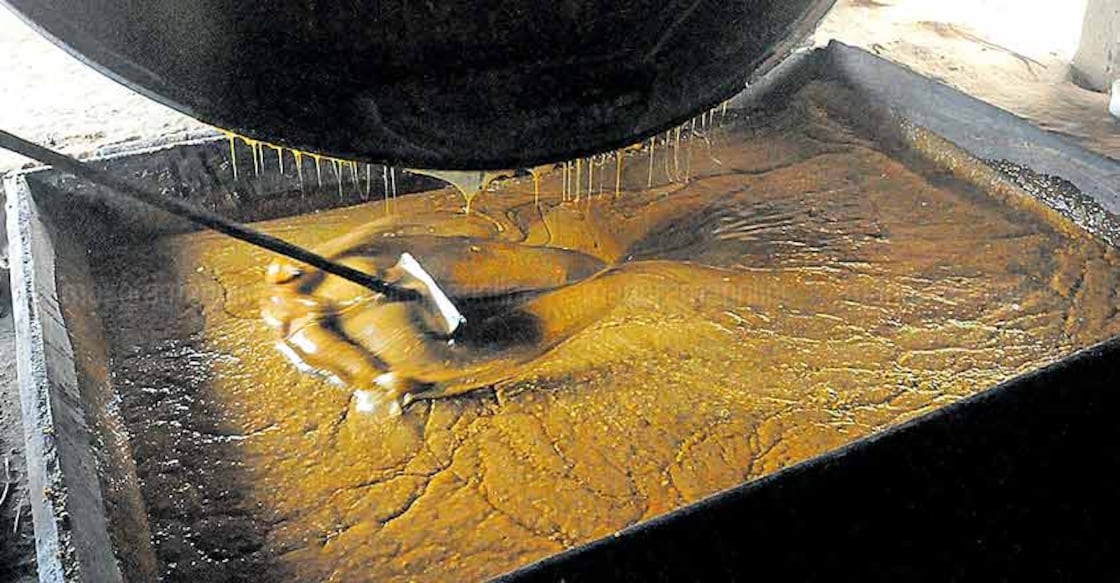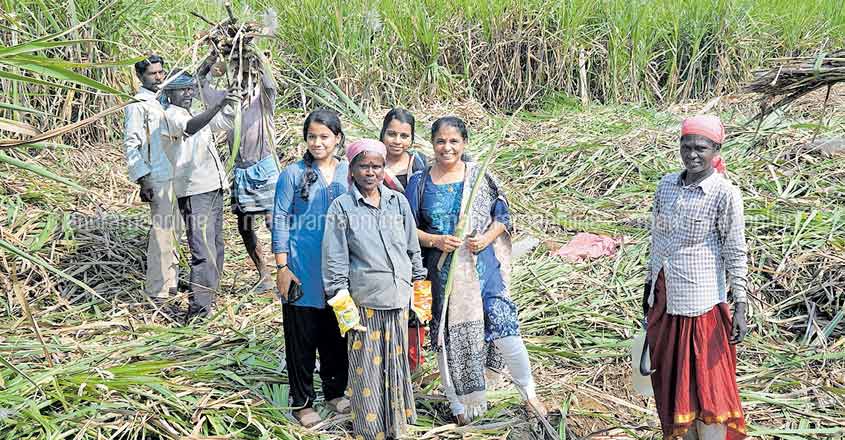Kerala's own Marayur jaggery earns Geographical Indication tag

Mail This Article
The Marayur jaggery which is known for its high quality, unique flavour and medicinal properties has earned the prestigious Geographical Indication status. It is the 24th product in the state to secure the GI status and the 9th one to gain it through the support of the geographical indication cell at the Agricultural University. The latest development would hinder the production and sale of fake jaggery thereby increasing the value of the original product that is produced by around 900 farmers at the Marayur and Kanthalloor areas in Idukki district. It was minister VS Sunilkumar who announced the news of Marayur jaggery earning the GI status.
Geographical Indication
A Geographical Indication (GI) sign is used on products that have a specific geographical origin and possess unique qualities and reputation due to that origin. Only registered farming communities can sell products under the GI sign. Unlawful sale of products with fake GI signs could invite rigorous imprisonment up to three years and fine.
Marayur jaggery
In Kerala, sugarcane is mainly produced in places like Pandalam, Thiruvalla, Marayur and Palakkad. Unlike the other places, sugarcane is produced throughout the year in the Marayur – Kanthalloor areas. Jaggery is available here at any time of the year. Around 900 farmers produce sugarcane in about 1800 acres of land. Presently, a kilo of fresh jaggery costs between Rs 55-60. However, the farmers say that they could continue the production only if they get at least Rs 80 for a kilo. They say that the media attention gained through the GI status has increased the sales significantly. At the Vaiga exhibition held at Thrissur, a kilo of original Marayur jaggery had earned up to Rs 130. Around 3 tons of jaggery was sold on those days.
Towards GI status
It was agriculture minister VS Sunilkumar who after visiting Marayur, in 2016, instructed the Agriculture University vice chancellor P Rajendran to initiate the process towards conferring the GI status to the Marayur jaggery. The university swiftly formed a geographical indication cell with Dr CR Elsy as its coordinator. The minister himself has taken the initiative to convene a meeting at Marayur and made the communities of sugarcane farmers in Anjunadu, Mahad and Mapco submit an application towards the same. The intervention of Dr R Chandra Babu, the new vice chancellor of the agriculture university made the procedure gather momentum. The final application was submitted on 9th March 2018. The samples of the original Marayur jaggery and other local jaggery varieties were tested at authorized labs. Along with these results, the detailed map of the location and the logo of the product too were submitted at geographical indication registry at Chennai.
How jaggery is made

Juice is first extracted from sugarcane using the juicing machines that are usually used by the street vendors who sell sugarcane juice. The juice is then stored in huge drums. The clear extract on the top is then transferred into the big vessel in which jaggery is made. In these areas, the vessel in which 1000 litres of jaggery could be boiled is called copra. The vessel or copra is heated over the flame. The pressed sugarcane from which the juice has been extracted is burned to light up the stove. Some lime is then added into the heated vessel. The enzymes which collect the top are removed. When the water is completely evaporated, the jaggery is transferred to another vessel using a pail. The jaggery is rolled using hands when it has cooled down.
Unique properties
Ordinary jaggery has golden brown hue while the special Marayur jaggery has a dark brown shade. Usually chemicals which contain hydrose are added to bleach the ordinary jaggery. However, this may cause severe health problems. As the Marayur jaggery is rolled with hands, the hand prints are clearly visible on its surface. They are rich in iron and calcium as well. Besides, they contain less amount of sodium and are cleaner without any traces of stones or sand. The Marayur jaggery is sweeter that the other varieties and has less amount of salt in it.
Besides the Kanthalloor jaggery, many other regional products are trying to gain the geographical indication status. The procedures have already begun to confer GI status for Edayoor chillies and Vadakantalloor garlic. The Agriculture University, with the support of a group of dedicated scientists headed by vice chancellor Dr R Chandra Babu, head of the research department Dr Indira Devi and coordinator of the GI cell Dr CR Elsy, is all set to give an impetus to the indigenous and traditional products of Kerala by helping them secure the GI status.

